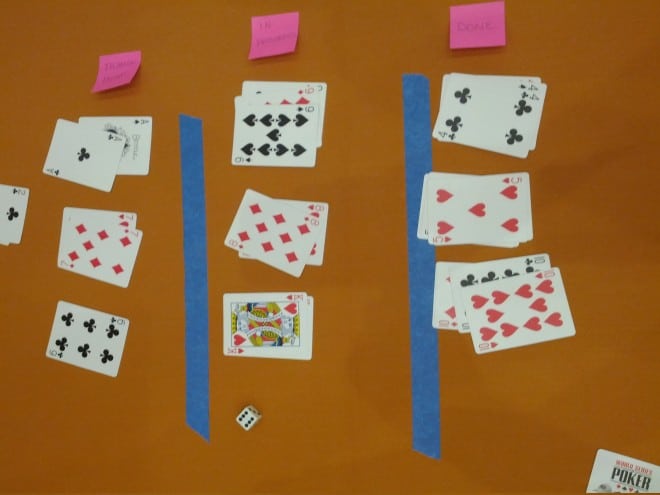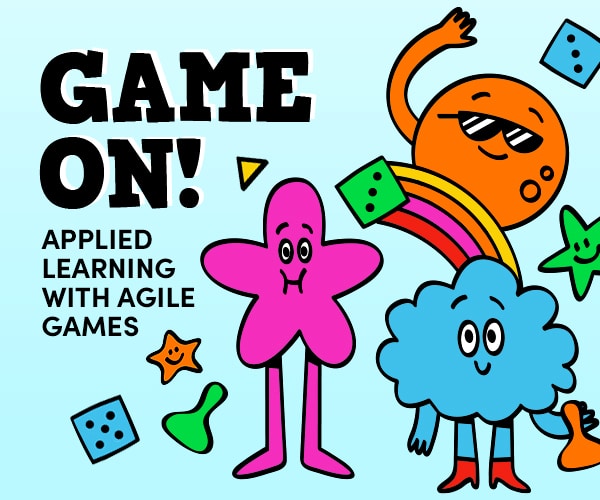Die Card Die – An Interruption Game is a card and dice game for teaching the impact of interruptions on iterations. This game was created as part of the “Agile Game Incubator” session at Agile 2012.
Created By: Todd Charron, Richard Cheng, Cynthia Eng-Dinsel, Sophie Manton, Stacy McDonald, Judith Mills, J Paul Daigle, and David Parker.
Timing: About an hour

Materials: 1 deck of playing cards, 1 six-sided die. Optional: Tape and sticky notes to create board.
Players: 4-10
Instructions:
In this game, the 52 cards represent the overall scope of the project. The goal is to deliver all 52 cards. You deliver cards by matching all 4 cards of each face value.
You play the game twice. The first time with no interruptions, the second time with interruptions.
Game 1
In 3 minute Sprints –
Each player plays one card from their hand one at a time into an “In progress” section on the table and then rolls a die, disregarding the result of the roll. When all four suits of a particular card are “in progress” that feature is now complete and can be moved to a “Done” section on the table. Continue until the 3 minutes are up.
At the end of the sprint, record the total number of completed cards. Cards in progress can carry over in the in-progress for the next sprint. Continue Sprinting with the remaining cards up. All 52 are delivered.
Game 2
Do the same as in game one, except if the roll is a 6, move all work in progress to the discard pile and do not play any cards that match the faces in the discard pile. These cards can no longer be used this iteration (they have been removed from the iteration as a result of the interruption). If in mid-sprint you run out of playable cards, then you can pull cards from the discard pile.
At the end of the 3 minutes record the number of features completed. Cards in progress can carry over in the in-progress for the next sprint. Cards discarded are re-allocated back to the players. Continue Sprinting with remaining cards until all 52 are delivered.
Debrief
The concept is that when a 6 comes up the work is progress in the current iteration has been de-prioritized or put on hold in favour of an emergency interruption.
The first time the game is played, the players will finish or just about finish delivering all 52 cards. The second time it is played, it will take many sprints, probably 3-5.
Learnings
The value of limiting work in progress (players will try to focus on getting something done before it gets interrupted).
The impact of interruptions on overall delivery time (fewer features delivered, takes more iterations to get the same number of features out the door).
The cost of technical debt from features that get shelved for awhile.
The value of working together to help get things to done sooner.





